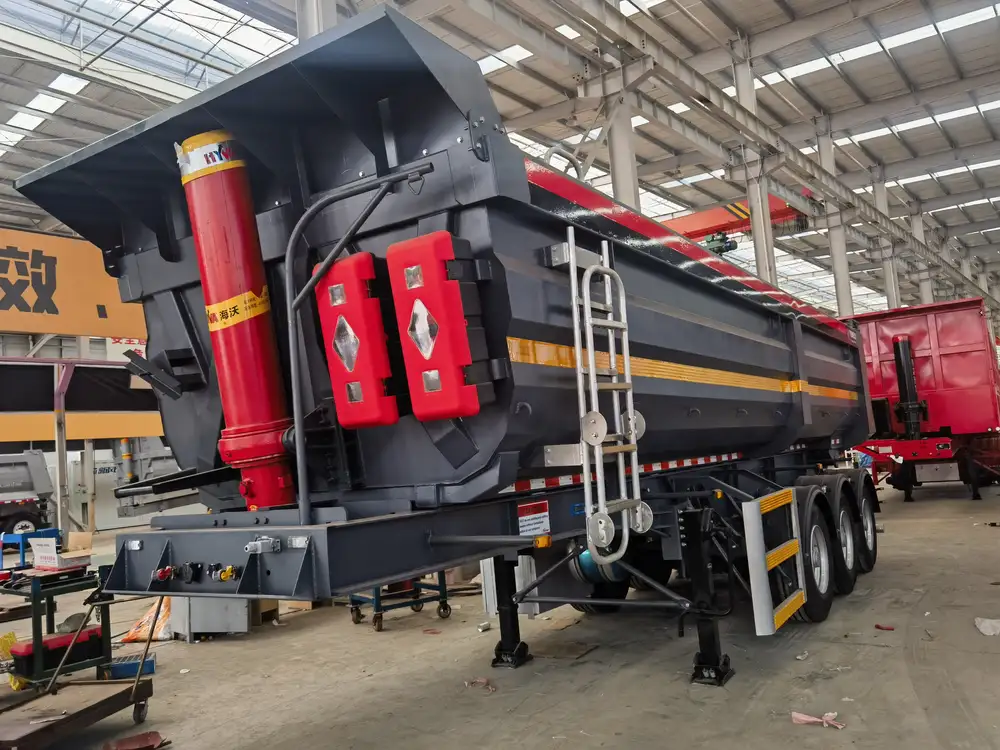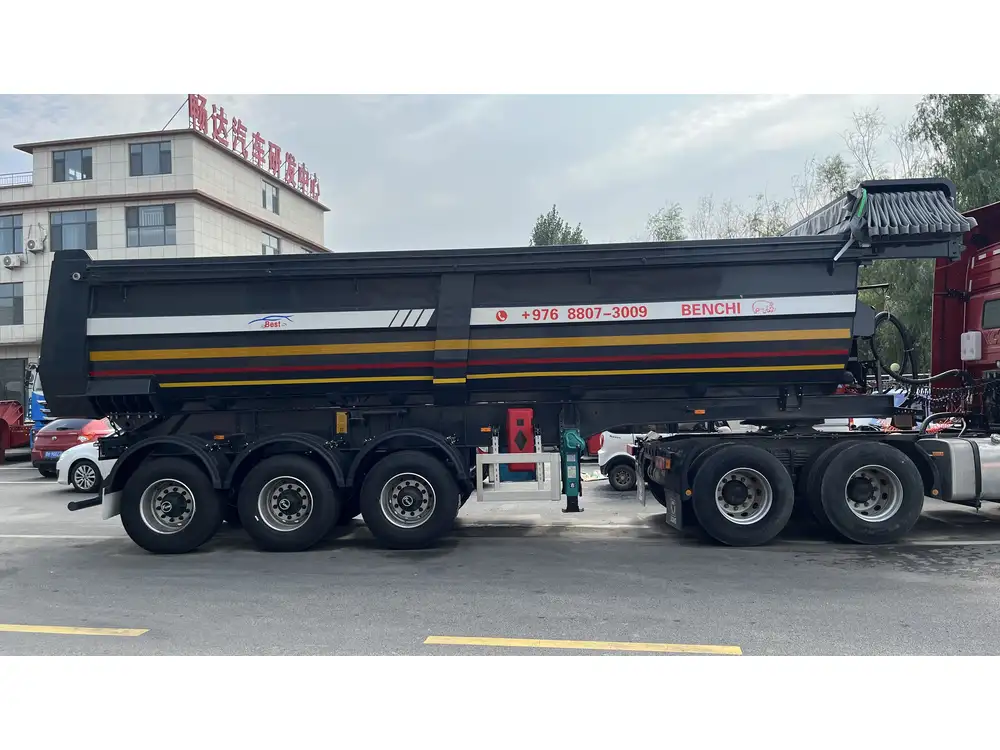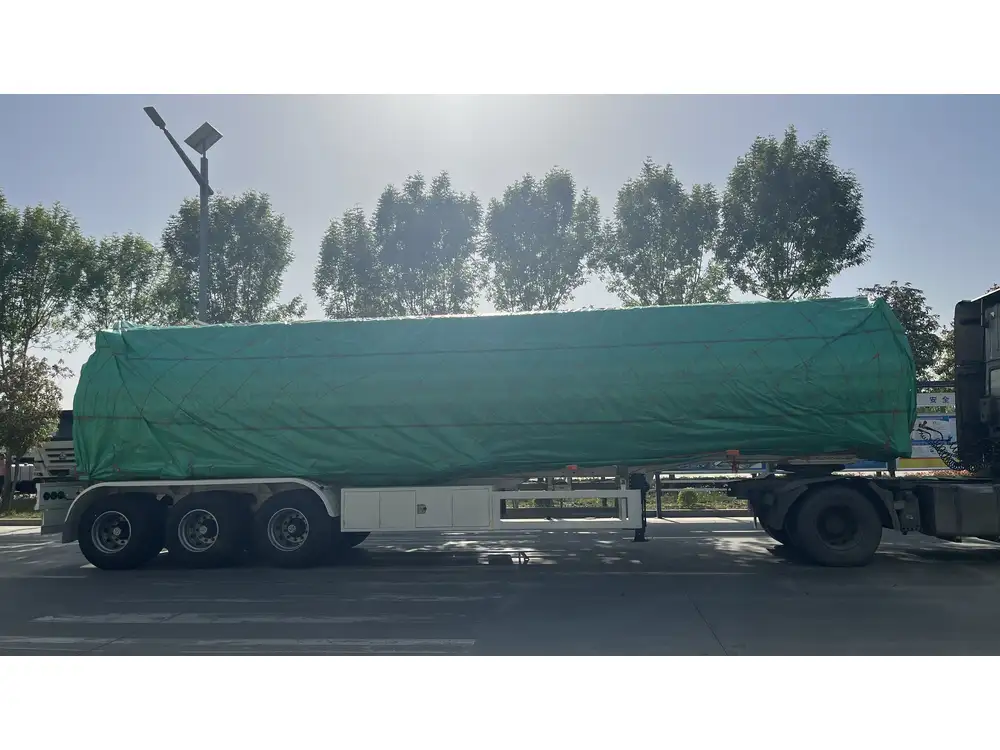Navigating the world of semi-trailers can seem intimidating, especially when it comes to maneuvering and backing up these large vehicles. As manufacturers of semi-trailers, we understand the intricacies and challenges that drivers face daily. Here, we delve into the complexities of backing up a semi-trailer, providing insights, tips, and techniques to simplify the process and enhance operational efficiency.
Understanding the Dimensions and Weight of Semi-Trailers
Backing up a semi-trailer is not merely about skill; it’s about understanding the physical characteristics of the vehicle. The average semi-trailer measures from 28 to 53 feet in length and can weigh as much as 80,000 lbs when fully loaded. When you factor in the length and weight, it becomes clear that backing a semi requires not only technical skill but also a keen spatial awareness.
The Impact of Trailer Type on Maneuverability
Flatbed Trailers
- Dimensions: Typically 48 to 53 feet
- Usage: Common in transporting heavy machinery and large goods
- Maneuverability: Requires careful weight distribution; backing can be challenging due to the open structure.
Reefer Trailers
- Dimensions: Usually 53 feet
- Usage: Ideal for transporting perishable goods
- Maneuverability: Increased weight due to refrigeration unit; drivers must account for balance.
Tanker Trailers
- Dimensions: Ranging from 36 to 53 feet
- Usage: Used for transporting liquids
- Maneuverability: Unique challenges due to liquid sloshing; drivers need to adjust their backing techniques accordingly.

Common Challenges in Backing Up a Semi-Trailer
Backing up a semi-trailer is fraught with challenges:
Limited Visibility
Many drivers struggle with visibility. The rearview mirrors alone cannot provide a complete picture of what’s happening behind the trailer. To combat this issue, consider the following:
- Use of Spotters: Have a colleague guide you, ensuring clear communication.
- Mirrors & Cameras: Invest in additional mirror and reverse camera systems to provide better visibility.
Length and Turning Radius
Backing up a semi-trailer requires extensive consideration of the trailer’s length and turning radius:
- Understanding the Pivot Point: The point where the trailer rotates can significantly affect maneuvering. Visualize the movement of the trailer relative to the cab and make adjustments accordingly.
- Pathing: Ensure the route you select allows adequate space for turning without encroaching on other areas.

Weather Conditions
Adverse weather can exacerbate the already complex task of backing up:
- Wet or Icy Conditions: These can reduce traction, making the vehicle more difficult to control. Performing maneuvers slowly and deliberately helps maintain grip.
- Wind: High winds can affect stability, requiring attentiveness during backward maneuvers.
Techniques for Backing Up a Semi-Trailer
Here are some essential backing techniques aimed at enhancing your skills:
The Straight-Line Method
Align the Trailer
- Start by positioning the tractor so that the trailer is straight and aligned with your desired path.
Use Steering Inputs
- Turn the steering wheel in the direction you want the back of the trailer to go:
- Right Turn: Turn the wheel to the right to move the trailer left.
- Left Turn: Turn the wheel to the left to move the trailer right.
- Turn the steering wheel in the direction you want the back of the trailer to go:

The Offset or Angled Backing Method
Begin with a Visual Reference
- Position the tractor at an angle to the desired parking spot, ensuring you have ample room to maneuver.
Begin Backing Slowly
- Gradually reverse, maintaining visual reference points.
Adjust Steering
- Make small adjustments in steering to guide the trailer into the spot, keeping your line of sight adjusted based on the pivot point.
The “S” Maneuver
Executing the “S” Curve
- When aiming to back into a tight area, employ the “S” maneuver: start by swinging wide before reversing, directing the trailer to reach the target location.
Continuous Observation
- Maintain watch over the surroundings, making sure to react accordingly based on any shifting obstacles.
Practicing Backing Skills
Developing proficiency in backing up a semi-trailer takes significant practice. Consider implementing the following strategies:

Visual Aid Training
Slowly work through visual aids showing how trailer positions relate to tractor movements. Diagrams can outline the dynamics of backing and sharp turns.
Simulated Environments
Use simulation software or training facilities designed to mimic backing scenarios. This controlled environment enables hands-on practice in varying situation levels before hitting the road.
Continuous Training
- Attend Workshops: Enroll in programs provided by trucking organizations focused on driving techniques and equipment handling.
- Voluntary Practice: Offering to back up while on site can help solidify skills through real-world experience.

Resolving Issues that Arise While Backing
Despite preparation and practice, challenges may still arise while reversing a semi-trailer. Here’s how to tackle common problems:
Stuck Situations
- Assess the Environment: If stuck, assess whether the terrain is contributing to the issue (consider traction and incline).
- Seek Assistance: When in doubt, engage other drivers or personnel to assist in maneuvering.
Misjudged Distances
- Stop and Re-adjust: If a driver miscalculates distance, stop the truck, shift into a more advantageous position, and reevaluate the trajectory.
- Communicate Clearly: Use hand signals or walkie-talkies for clear communication with a spotter if available.

The Importance of Safety in Backing Maneuvers
Without a doubt, safety should be your top priority. Emphasizing safety minimizes risks not only for drivers but also for other pedestrians or vehicles within proximity.
Pre-Operation Safety Checks
Inspect Mirrors & Cameras
- Confirm that all visibility aids are functional and correctly adjusted before the operation.
Clear Surroundings
- Conduct a thorough scan of the surroundings to ensure no obstacles are present.
Correct Use of Safety Equipment
Use of High-Visibility Gear:
- Encourage the use of reflective vests for spotters aiding in visibility.
Utilize Safety Cones:
- Employ cones to designate safe areas while maneuvering a trailer in busy environments.

Conclusion: Empowering Drivers Through Knowledge and Practice
Backing up a semi-trailer may indeed pose challenges, but with the right knowledge, techniques, and safety protocols in place, drivers can approach this task with confidence. Understanding dimension, visibility concerns, weather conditions, and employing safe backing procedures can significantly enhance skill levels and operational efficiency.
By investing in continuous training and utilizing the available resources, drivers will not only improve their own abilities but also contribute to a safer and more effective transport experience. With determination and practice, we can help ensure that backing up a semi-trailer doesn’t have to be an arduous task but rather a manageable and successful maneuver.
Empower yourself and your fleet—choose to prioritize backing skills and safety today.



